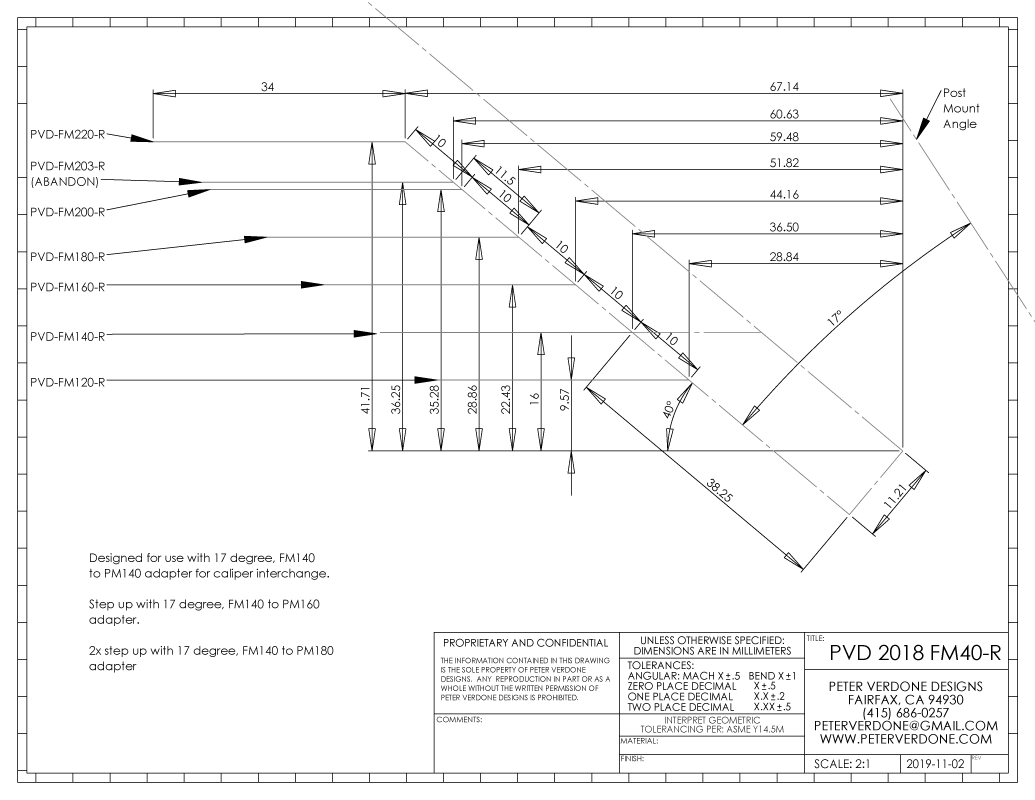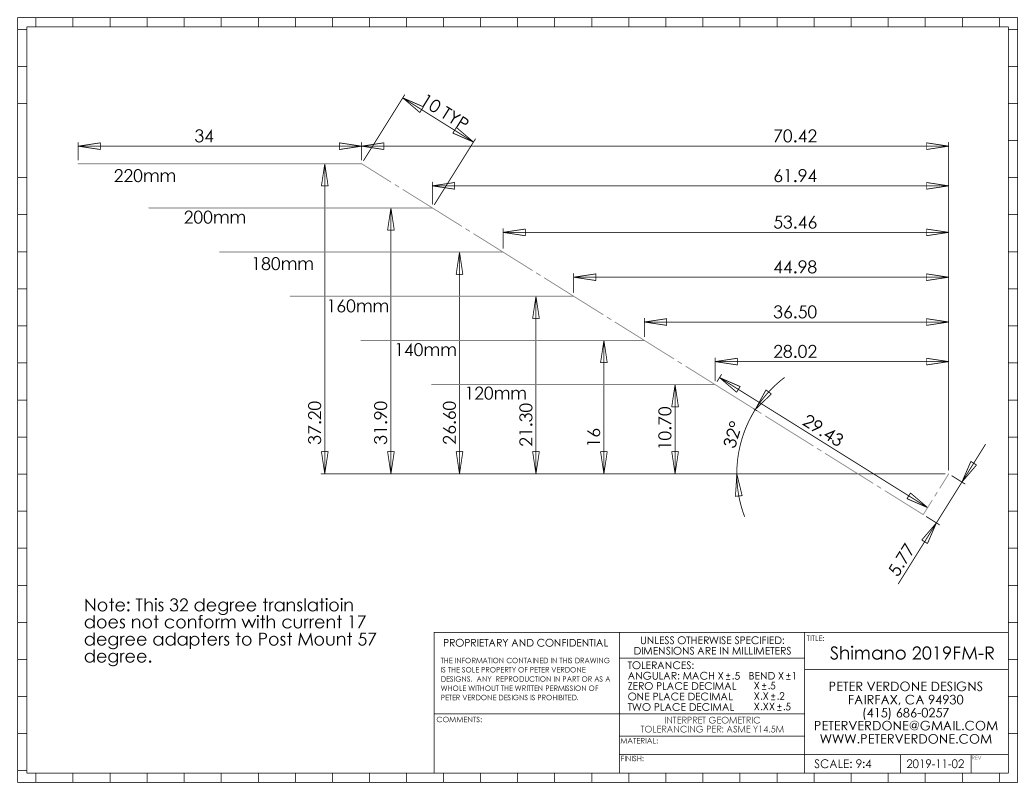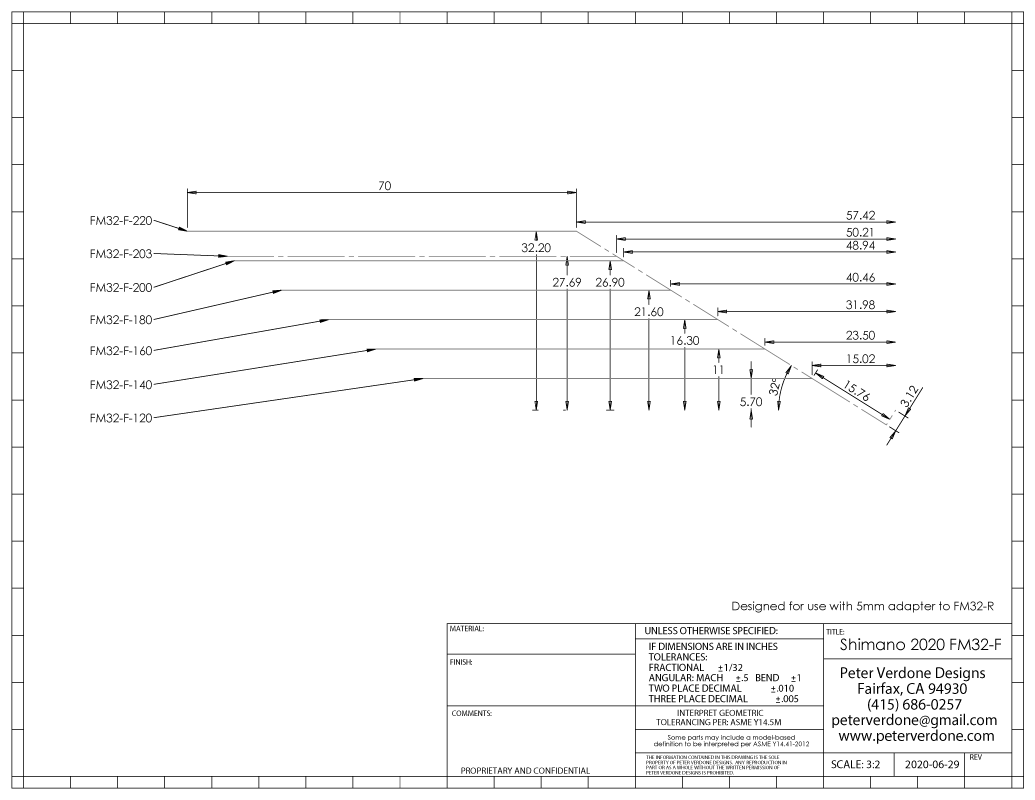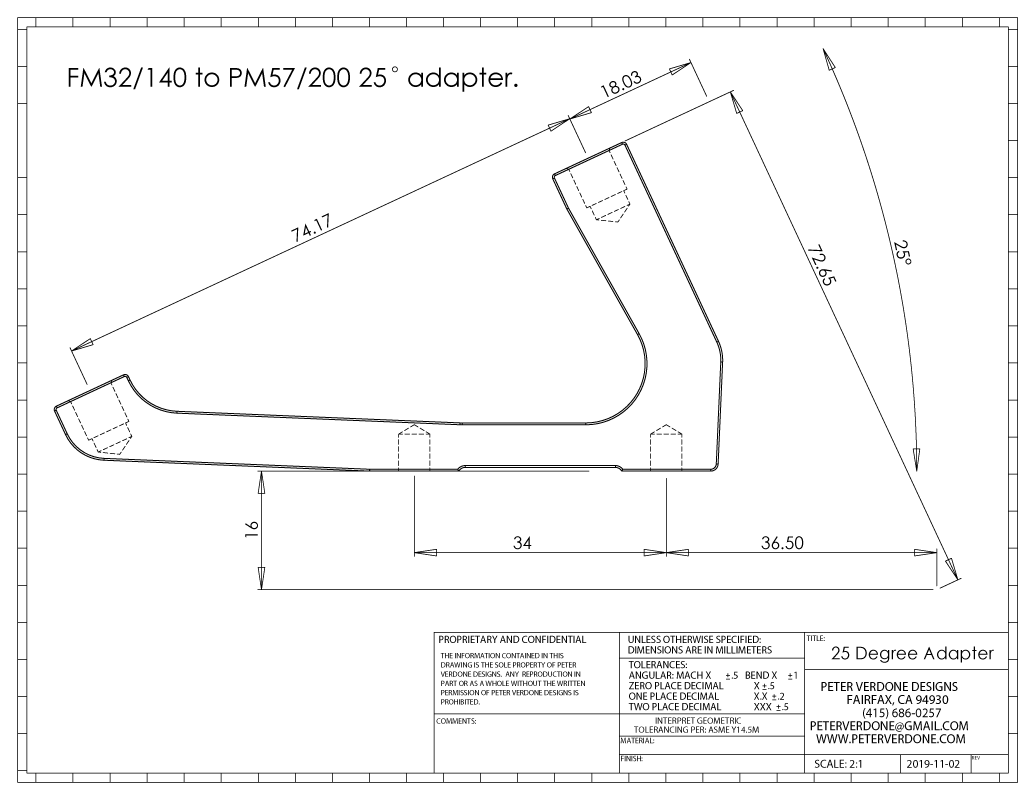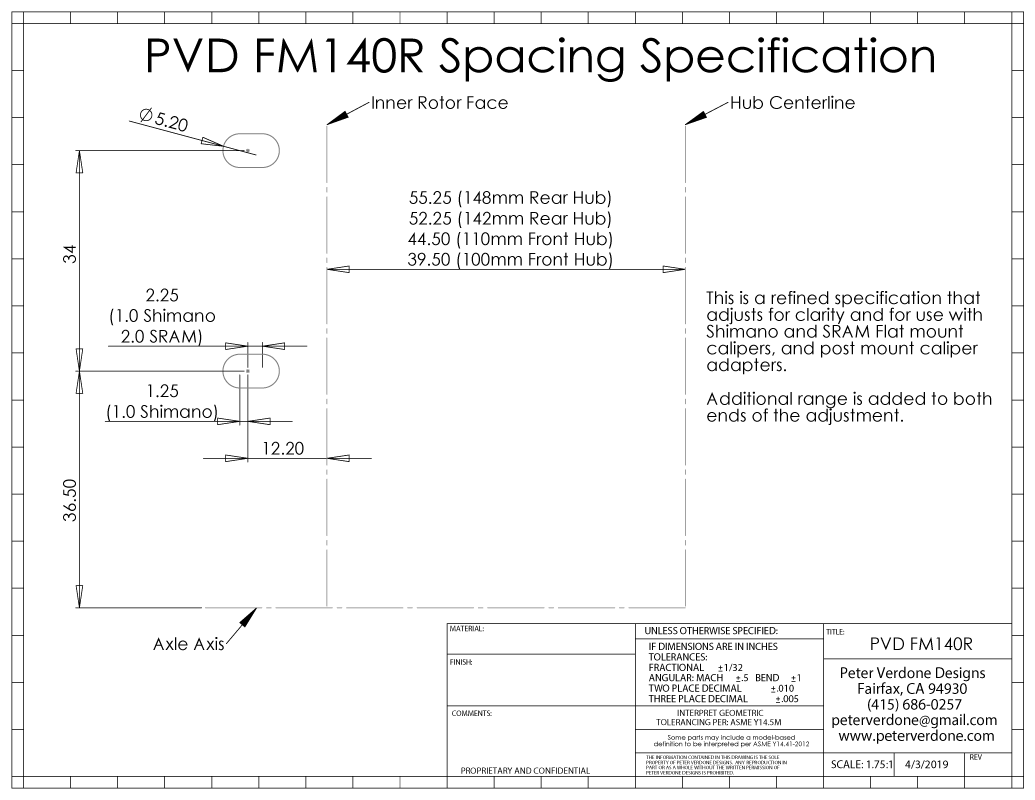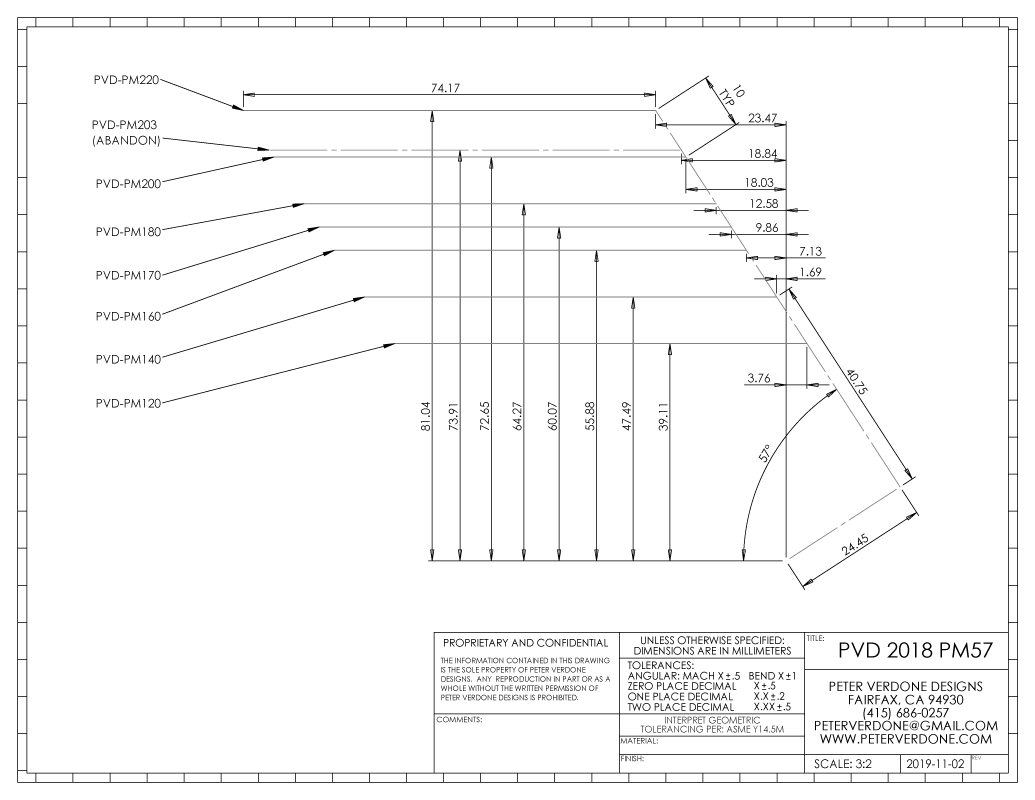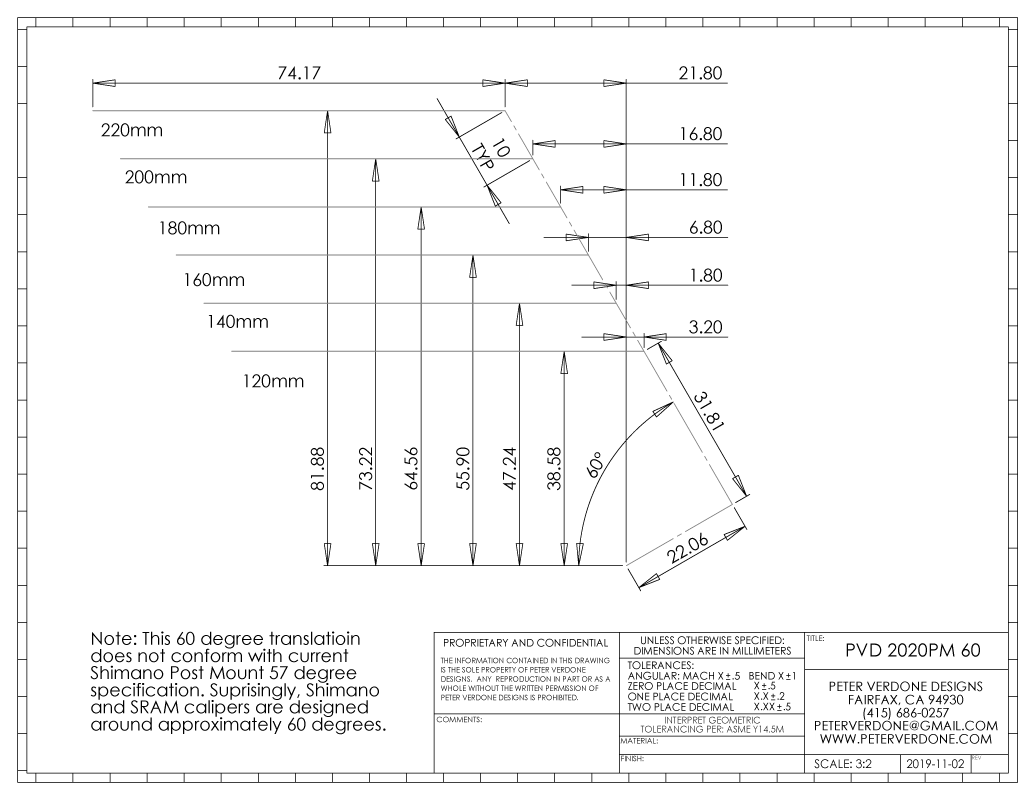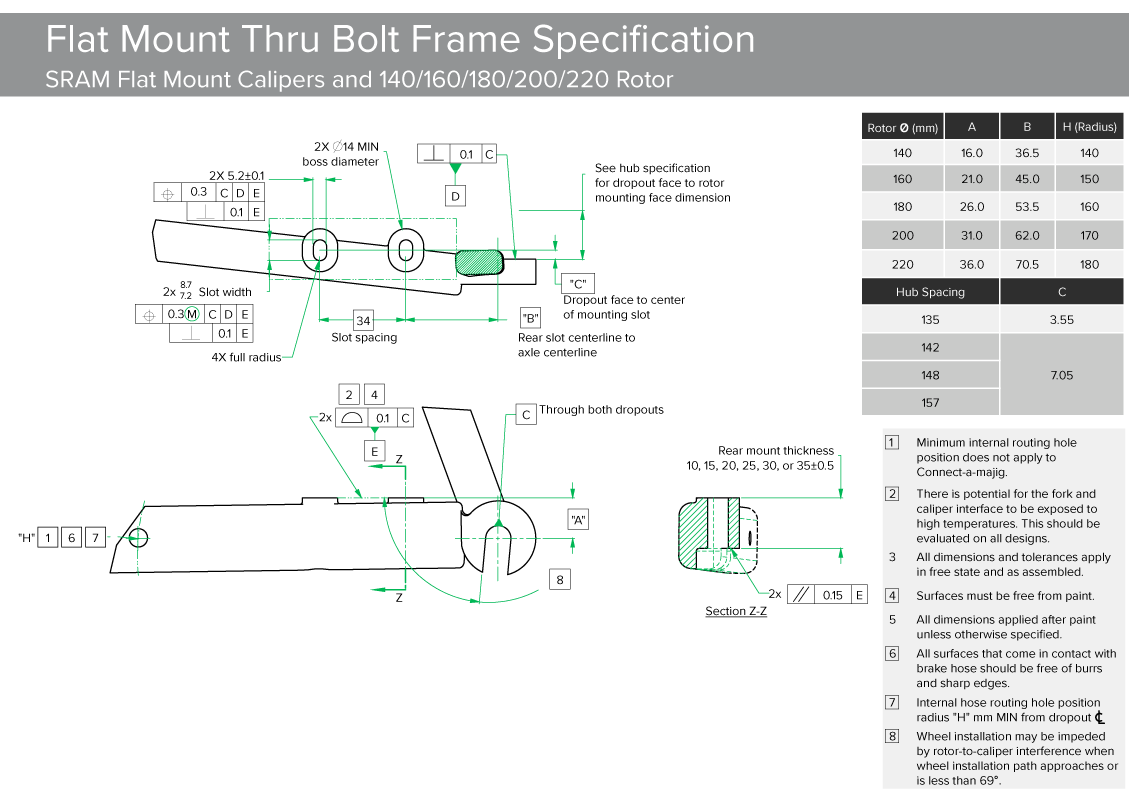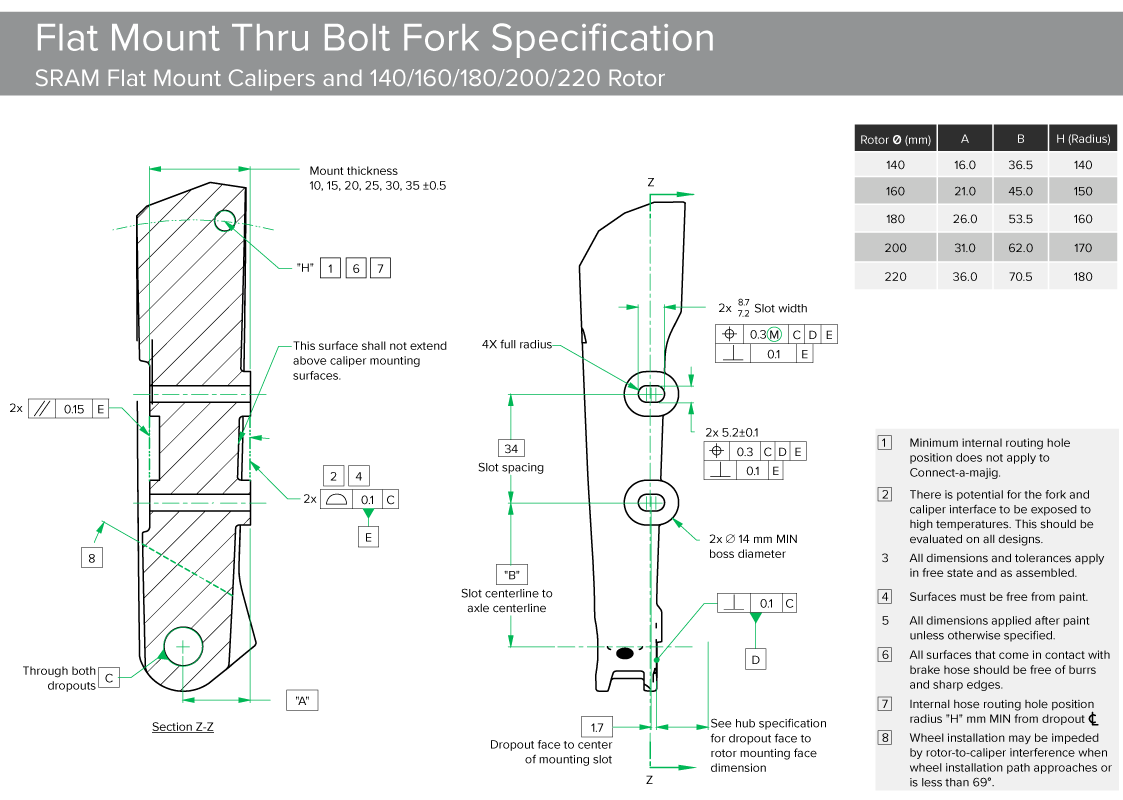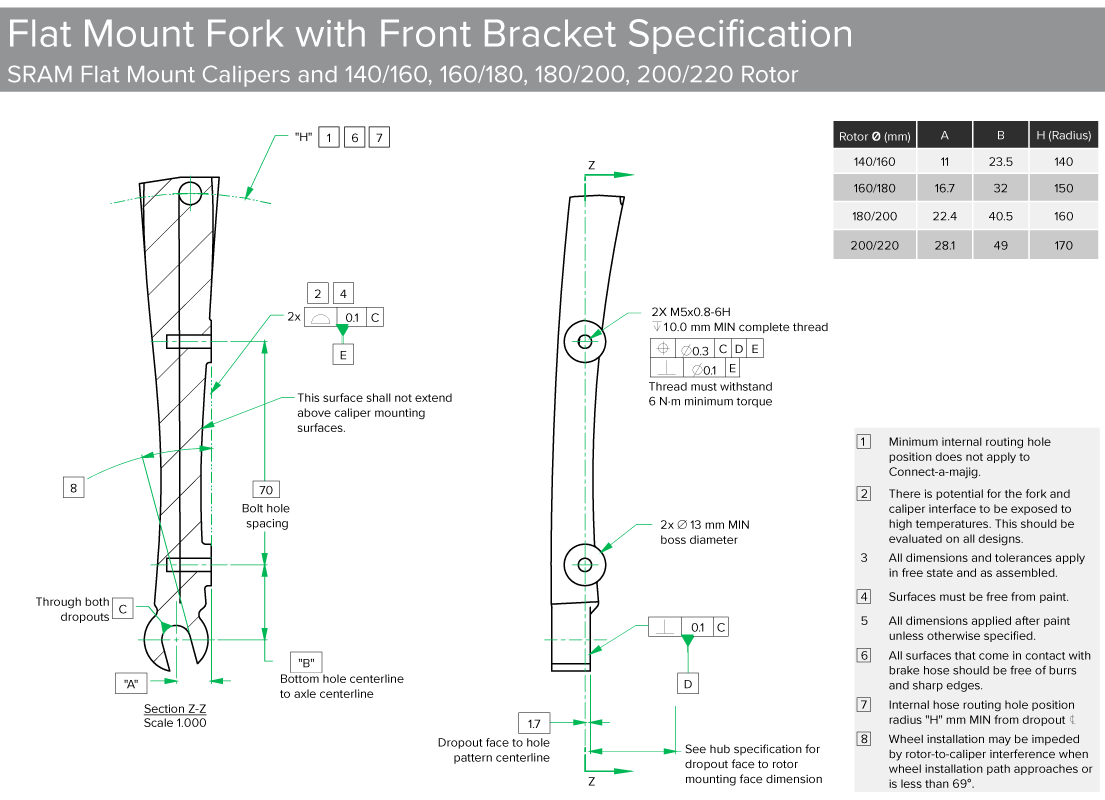Generally, I like the motto “Move fast and break things.” It’s punk rock. It’s what tech needs to do. It pushes hard, fearlessly. It’s better to take the risk now than just pudder along doing the same old thing. Move the ball forward!
This, except when things do get broke…and it took forever to do so. Shimano has been screwing up almost everything in recent memory. This is just another in a long line of mistakes.
It finally arrived. It took so long. A SECOND PLACEMENT FOR FLAT MOUNT CALIPERS!!!!!! Just about 5 years since the introduction (April 1, 2015) of the flat mount caliper we are getting an entirely new position for mounting!!! AMAZING! Where we once only had a 140mm rotor placement, now we have 160mm. Two magical placements!!! Maybe we can get another in just 3 more years.
A year and a half ago, because of the need in the world of bike design I was forced to develop a wildcat system to implement advanced designs for my bikes. That system made use of existing 17 degree adapters to post mount locations to construct a fully systematized way of extending the caliper to wherever we liked. I’ve been sharing that FM40 degree translation as that allows use of 17 degree adapters from FM40 to PM57. It was so simple. It was obvious. It really worked great. I expected to see Shimano and TRP release this as their spec as they were the ones making the actual adapters for several larger companies as well as the aftermarket. It all seemed pretty simple and obvious once you got the point. Shimano doesn’t work that way. Chaos rules in their cubicles.
We’re now supplied with the 21.3mm and 45.0mm position to pair with the existing 16.0 and 36.5mm position. We do some math and see that this is an exact 32 degree arrangement so we can carry it out from 120mm to 220mm placement.
This is a really big problem. Shimano completely fucked up. Bad.
Get out your pencils smart guys. 17 degrees wasn’t chosen because it was the perfect angle for melding flat mount to post mount. It wasn’t. I was convinced it was supposed to be. I was wrong. 17 degrees just happens to be the steepest angle possible when making an adapter from FM140 and PM57/140. It was simply a packaging placement. The angle was carried on to the FM140-PM57/160 and FM140-PM57/180 (and other) adapters. This was just laziness, not a system.
I took advantage of this when designing FM40. The elegance was amazing. Adapters would work FM40/180-PM57/200, FM40/160-PM57/160, FM40/160-PM57/180, etc. Whatever you wanted to do was possible with existing parts off the shelf. SO FUCKING OBVIOUS. Almost as easy as radial calipers without the cost.
The FM32 degree construction is a considerable 8 degree difference from the existing adapters to the FM40 and PM57 needs. We will need 25 degree adapters to make a workable system that can combine flat mount and post mount. Try to draw a FM32 to PM57 adapter that works like that. YOU CAN’T! You need a steep 25 degree adapter, that can’t be done until you get to around FM32/140 to PM57/200 adapter which isn’t very useful.
Some have asked, why is this important? Why not just use flat mount calipers if the bike is designed for flat mount calipers? Simple, real life. Few flat mount calipers are available for mountain bikes other than Hope and Magura currently and those are rare. Even so, the early ones will be simple two pot systems. For aggressive mountain biking and applications using four pot calipers, the wait is going to be a long time. Having the option to run a post mount caliper is important until the market can saturate and even then, options are always good. I’m a fan of flat mount calipers. I’m more a fan of having a decent working bike to use now and in the way I want. We need to be able to use both calipers. Period.
The real comic tragedy here is that once four pot flat mount calipers in FM140 are getting drawn up, 8 degrees of space is going to suddenly look a lot more attractive. Who wants to be that we’re going to see a push to a 40 degree design in a couple of years?
So we look deeper for a good solution in all of this muck, torn free from the 17 degree adapter connection. Here’s the PM57 system.
A year and a half ago when I systematized the Shimano Post Mount positions to get a true 57 degree structure. This was based on published ‘standards’ from Shimano and others. The problem that us designers knew, even then, is that nobody really uses the published numbers when designing their calipers. SRAM uses a 60.9 degree angle in their PM calipers. Shimano uses between 59.4 AND 60.4 degrees. Other calipers will also float around 60 degrees.
So, since what we really need to do now is start making entirely new adapters for precision fitting of calipers between FM and PM, we build a new position table using 60 degrees as the basis, not 57 degrees. This is now very similar to the specification that SRAM spells out in their documentation.
Now we need to make new 28 degree adapters that can work far better than adapters of the past. But this is worse than before. It’s not going to work. We simply don’t have the room. We’re going to have to have a different adapter for each mount and caliper combination rather than a system. Novice bicycle technicians are going to go mad. Even I’m mad. If SRAM, Hope, Magura, and the others don’t agree to play nice along with Shimano, It’s going to be a complete shitshow.
So, now, we had something good. Something that worked. It just needed a fucking rubber stamp and it was done. Goddamit. What the fuck happened?!
We now move forward. The die has been cast. Clean the slate. Maybe we can finally kill the 203mm rotor while we’re at it.
If you’re at Philly Bike Expo this weekend and you’re talking with someone from Shimano, get the WTF? Fuck. They ought to be embarrassed.
2023 Update –
It seems that SRAM has done an excellent job updating their flat mount specifications to include most rotor sizes. I does deviate very slightly from what Shimano and I have laid out. It is, however, very well systematized at 30.5° in 9.86mm radial steps, offset 4.72mm from center. It’s a shame about the heavy handed rounding of their values.
That 9.86mm radial step may be to rationalized the translation to a truly concentric 10mm step. This falls apart when applied across the spectrum but the average may be useful. More work needs to be done on this.


